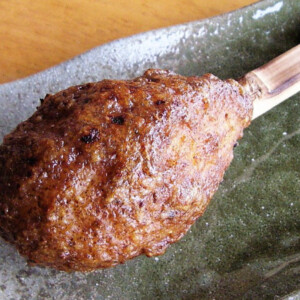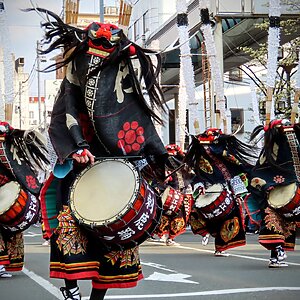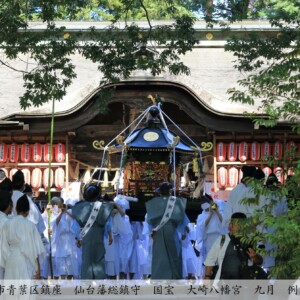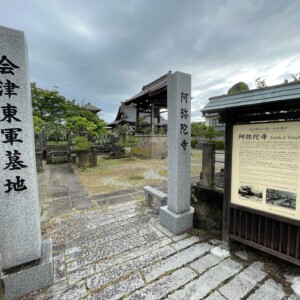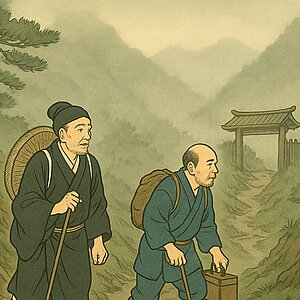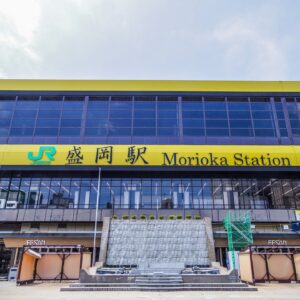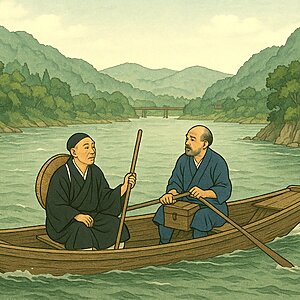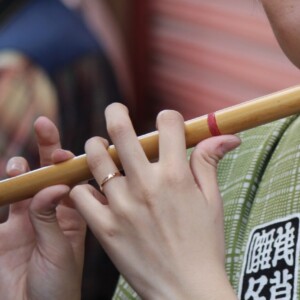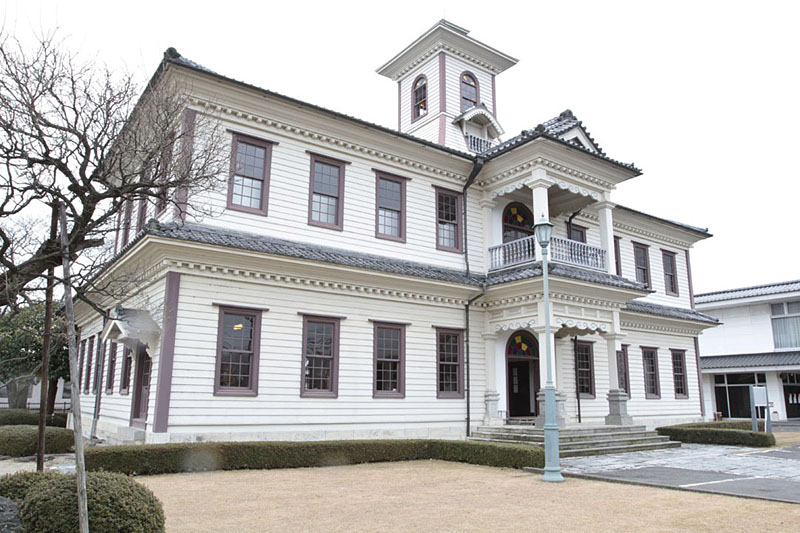
[Fukushima Prefecture] Is Kuwaori Town, the northern town, the birthplace of the Date family?
table of contents
- 1 The feudal lord who ruled the Koori region during the Kamakura period called himself "Date"
- 2 Kuwaori Nishiyama Castle was abandoned due to a dispute between parents and children.
- 3 Appeared in "Oku no Hosomichi". Kuwaori-juku, where Matsuo Basho frequented
- 4 Oiwake, the junction of Oshu Kaido and Ushu Kaido
- 5 The Meiji era "Former Date County Office" is designated as a national important cultural property.
- 6 Handa Silver Mine was once called one of Japan's three major mines and boasted the largest silver output in Japan.
- 7 Huge landslide at Mt. Handa and abandoned mine at Handa Silver Mine
Date Gunkoori Town, Date District , Fukushima Prefecture is a town located in the northern part of the Nakadori region (central part) of Fukushima Prefecture.
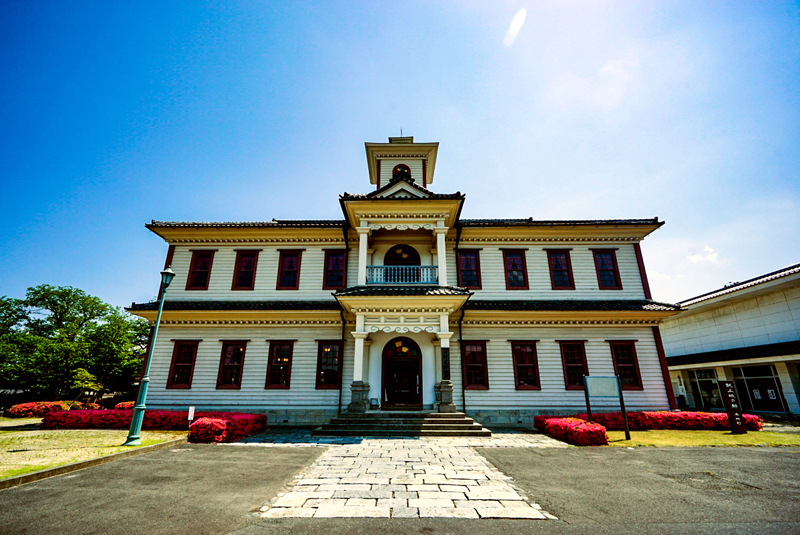
Kuwaori was one of the main roads in ancient times (Kofun period to Heian period) and medieval times (Kamakura period to Azuchi-Momoyama period), connecting Kyoto and the Tohoku region (Mutsu Province/Mutsunokuni/Dewa Province/Dewanokuchi). The Tosando Expressway used to pass there .
Since the Edo period, Tosando was called Oshu Kaido was the junction with Ushu Kaido, which it developed greatly as a post town, Kuwaori-juku. is.
The origin of the place name "Kuwaori" is unknown, but since the county house of Date District (Koori no Miyake/gun office in the ancient Ritsuryo system) was located there, it was later given the characters "Kori" and "Kuwaori". There is a theory that It is said that during the Kamakura period, the ``Kuwaori clan'' was separated from the ``Date clan.''
The feudal lord who ruled the Koori region during the Kamakura period called himself "Date"
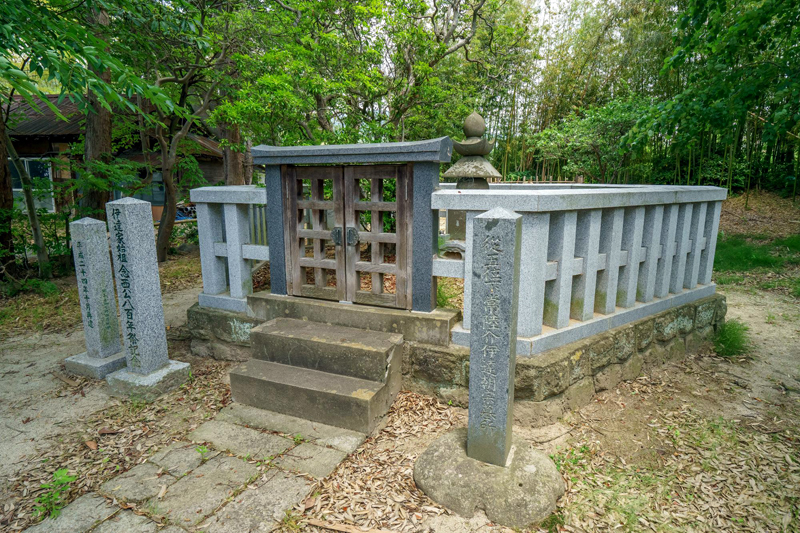
The Date clan was granted Date County by the Hitachi Nyudo-nen Saitomune sect, which achieved military success in Minamoto no Yoritomo's Battle of Oshu (1189, a battle in which Yoritomo destroyed the Oshu Fujiwara clan in Hiraizumi). It is said that it began when he called himself the Dateshi when he was arrested.
Date Masamune famous as the first lord of the Sendai domain , is the 17th generation from Chomune.
Date Choshu is said to have first moved to Takako (present-day Date City), and later moved to Kuwaori, where he also built a tile-roofed temple. This temple became the family temple of the Choshu sect, and a graveyard was built there. Successive generations of the family moved their castles to several locations within the territory, but the 14th generation, Tanemune, "Kuwaori Nishiyama Castle" and moved his headquarters from Yanagawa Castle. Around the current Honmaru ruins, there are remains of the castle from the time of Tanemune.
Tomamune Date's grave <Information>
- Facility name: Tomb of Date Chomune (ancestor of the Date clan)
- Address: Shimomanshoji Temple, Oaza Manshoji, Kuwaori-cho, Date-gun, Fukushima Prefecture
- Phone number: 024-582-2403 (Kuwaori Town Education and Culture Division Lifelong Learning Section)
Google Map
Kuwaori Nishiyama Castle was abandoned due to a dispute between parents and children.
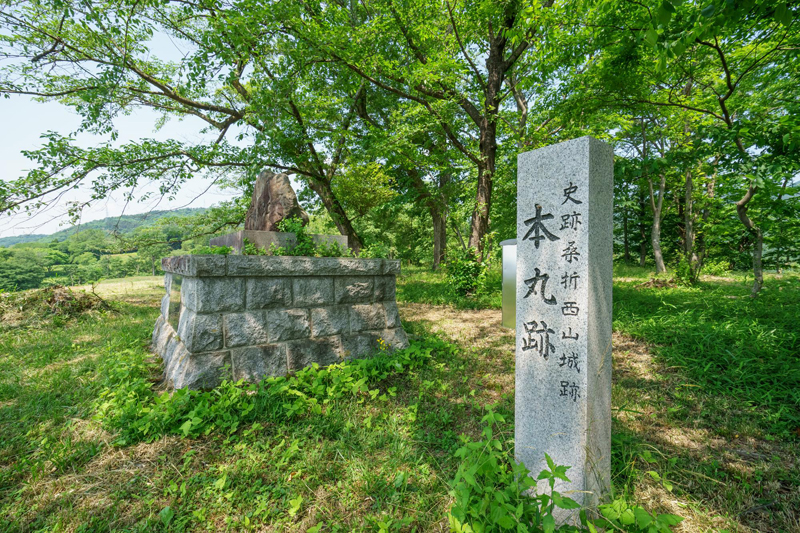
Kuwaori Nishiyama Castle , built by the 14th generation of the Date clan , Tanemune, was a castle during the peak of Tanemune's reign during the Sengoku period, with the Honmaru, Ninomaru, Middle Building, and West Building located on Mt. Takadate, 193 meters above sea level.
A building was built in the main enclosure where Tanemune conducted politics, and the entire castle was fortified with moats and earthworks, making it a fairly large-scale castle at the time. It seems that mansions for vassals were built around the castle.
However, Harumune was in conflict with his son Harumune, and after being defeated in the battle between father and son ( Tenbun no War /1542-1548), he left Kuwaori Nishiyama Castle. The castle was ordered to be abandoned by the Muromachi Shogunate, so he moved to Yonezawa (Yamagata Prefecture).

Currently, not a single building remains at the Kuwaori Nishiyama Castle Ruins The Kuwaori Temple Gate , located about 1.5 km south of the Kuwaori Nishiyama Castle Ruins , is said to be the gate of Nishiyama Castle, which was relocated to an abandoned castle, and has been designated as an important cultural property of Fukushima Prefecture. I am.
Kuwaori Nishiyama Castle Ruins<Information>
- Facility name: Kuwaori Nishiyama Castle Ruins
- Address: Honmaru and other areas of Manshoji Temple, Kuwaori-cho, Date-gun, Fukushima Prefecture
- Phone number: 024-582-2403 (Kuwaori Town Education and Culture Division Lifelong Learning Section)
- Free tour
- Cultural property: Nationally designated historic site
Google Map
Kuwaoriji Temple <Information>
- Facility name: Kooriji Temple Sanmon
- Address: 32 Shinmachi, Kuwaori-cho, Date-gun, Fukushima Prefecture
- Phone number: 024-582-2690 (Kuwaoriji Temple)
- Free tour
- Cultural property: Important cultural property designated by Fukushima Prefecture
Google Map
Appeared in "Oku no Hosomichi". Kuwaori-juku, where Matsuo Basho frequented
After visiting Iizuka (Iizaka Onsen), Matsuo Basho wrote in ``Oku no Hosomichi'' that he traveled by horse to Kuwaori-juku on his way to Sendai. He had a terrible experience at Iizaka Onsen, and headed to Kuwaori-juku in poor health. At Hoen-ji Temple in Kuwaori-juku, there remains a ``Tauezuka'' that was later erected by his disciples.
Oiwake, the junction of Oshu Kaido and Ushu Kaido
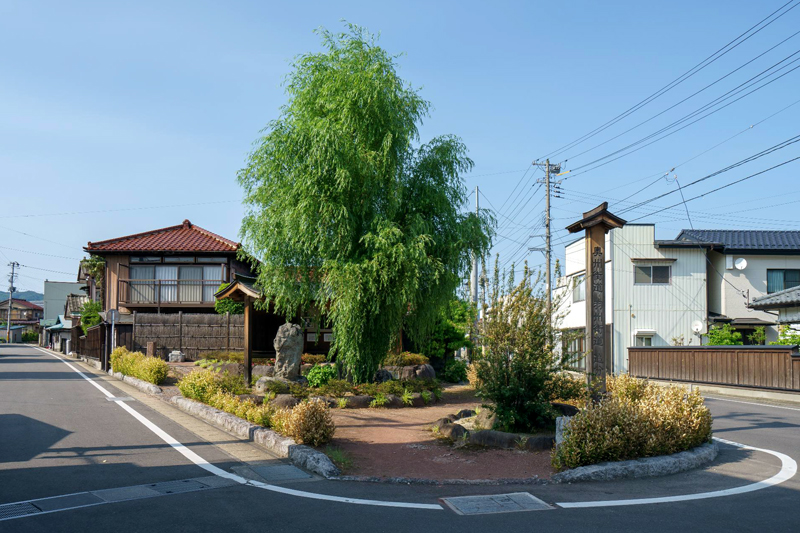
"Oshu-Ushu Kaido Oiwake" is a reconstruction and redevelopment of the junction between Oshu Kaido and Ushu Kaido in 2006. On the premises, there are guideposts from the Edo period, as well as pavilions and information signs.
Oshu/Ushu Kaido Oiwake <Information>
- Facility name: Oshu/Ushu Kaido Oiwake
- Address: Oiwake 1, Oaza Yachi, Kuwaori-cho, Date-gun, Fukushima Prefecture
- Phone number: 024-582-2403 (Kuwaori Town Education and Culture Division Lifelong Learning Section)
Google Map
The Meiji era "Former Date County Office" is designated as a national important cultural property.
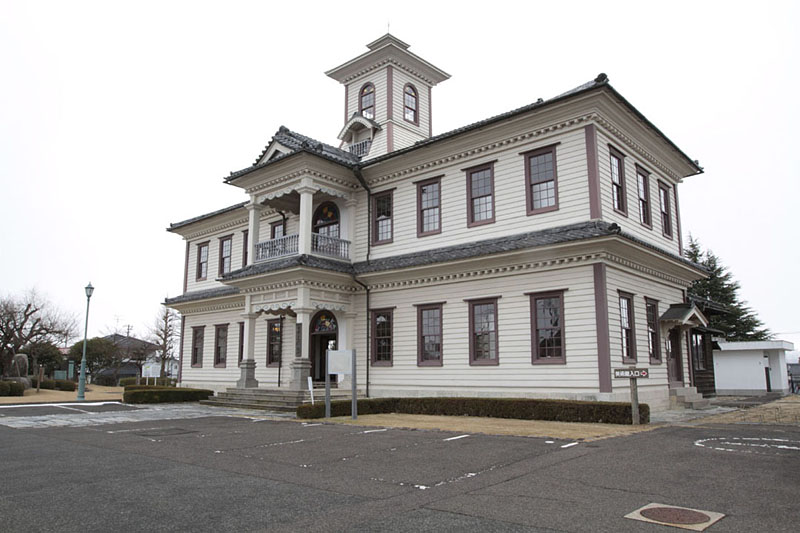
Kuwaori is connected not only to the highway but also to water transportation from the nearby Abukuma River, and from the mid-Edo period onwards, it became a very popular gathering place for silk thread and silkworm eggs produced in Date County. In 1883 (Meiji 16), the Date County Office was established, and it became the political and economic center of the Date region.
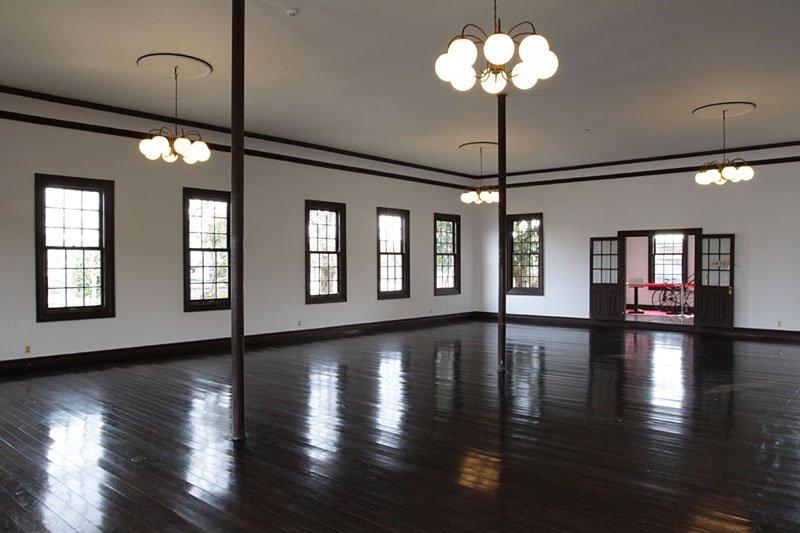
This Date County Office was abolished in 1926 (Taisho 15), but the building continued to be used as a branch office of the prefecture, ending its role in 1969 (Showa 44).
At first glance, the building appears to be a Western-style building, but it is a fusion of Japanese and Western styles, such as the gabled roof of the balcony. The central tower was once dismantled and removed during the Meiji period, but was restored in 1979 (Showa 54). This building is one of the largest existing county offices, and as a fusion of Japanese and Western architecture from the early Meiji period, it has extremely high cultural value, so it was designated as a national important cultural property in 1977.
The "Former Date County Office" was partially damaged by the Great East Japan Earthquake in 2011 (Heisei 23) and the Fukushima Prefecture Offshore Earthquake in 2021 (Reiwa 3), and was undergoing restoration work. Construction will be completed in December 2017, and the museum is scheduled to reopen after that.
Former Date County Office <Information>
- Facility name: Former Date County Office
- Address: 12 Jinya, Kuwaori-cho, Date-gun, Fukushima Prefecture
- Phone number: 024-582-5507 (Kuwaori Town Cultural Memorial Museum)
- Opening hours: 9:00-17:00 (last entry 16:30)
- Admission fee: Free
- Closed: Mondays (the next day if Monday is a holiday), the day after a holiday
- Cultural property: Nationally designated important cultural property
Google Map
Handa Silver Mine was once called one of Japan's three major mines and boasted the largest silver output in Japan.
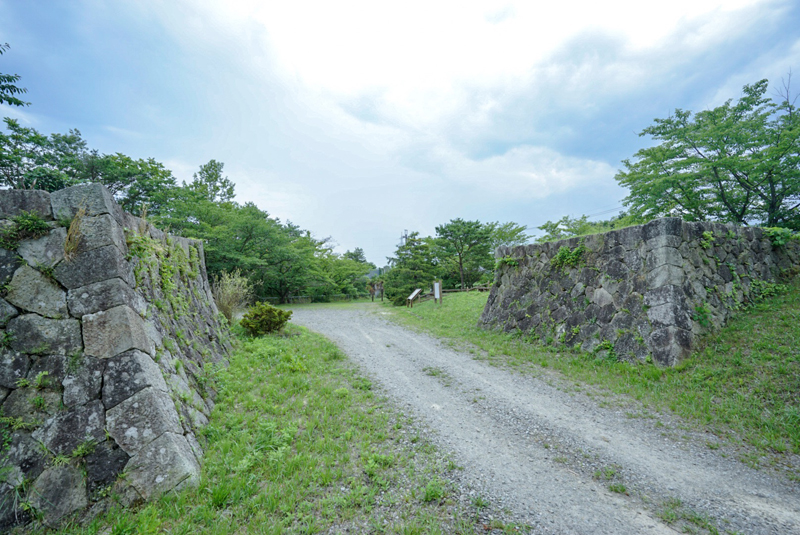
Handayama (863m above sea level) in Kuwaori was once one of Japan's three largest silver mines, along with Sado Kinzan (Niigata Prefecture, World Heritage Site Candidate) and Ikuno Ginzan (Hyogo Prefecture, Modernization Heritage Site). There was the Handa Silver Mine, which was so rich in production that it was called the Great Mine.
The Handa Silver Mine is said to have been discovered during the Heian period, and was mined by the feudal lords and feudal lords who owned the area from the Sengoku period to the early Edo period, and served as a source of income for the feudal lords. In the middle of the Edo period, it became the domain of the Edo shogunate, and excellent magistrates and engineers were dispatched from the Sado Gold Mine and Iwami Gin Mine, resulting in a significant increase in production and the creation of a large town around the silver mine.
From the latter half of the Edo period, the ore veins were depleted and production decreased, but in the Meiji period, Tomoatsu Godai, a native of Satsuma, introduced modern technology and redeveloped it, and the golden age returned. During this period, it became the largest silver mine in Japan.
Huge landslide at Mt. Handa and abandoned mine at Handa Silver Mine
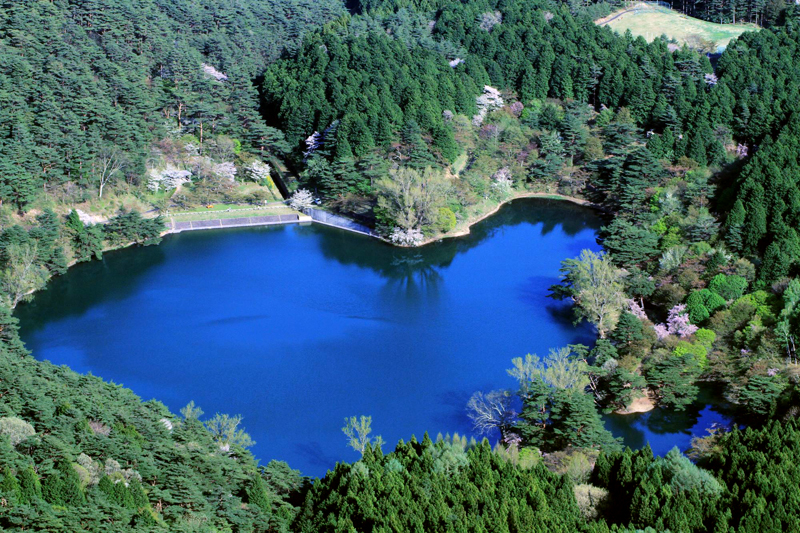
However, a landslide occurs in Mt. Handa, where the silver mine is located. Signs of this phenomenon began to appear around 1891 (Meiji 24), and large-scale landslides occurred from 1901 (Meiji 34) to 1903 (Meiji 36), and the Handa-shinuma that was created by this was destroyed in 1919 (Meiji 43). The Handa Silver Mine suffered major damage when it collapsed in 1999, but it was rebuilt at a smaller scale. After that, the management was taken over by Nippon Mining, but the mine was closed in 1950 (Showa 25), and the mine was finally closed in 1976 (Showa 51) due to the failure to find a profitable new ore vein.
The site where the remains of the trolley tracks that carried ore from the Handa Ginzan Mine and the stone walls used to build bridges remain is the Handa Ginzan Historical Site Park.The Handa Mountain area where Handayama collapsed and the Handanuma Swamp area was destroyed over the course of 67 years. Along with the construction, the surrounding area has been developed as the Handayama Nature Park, and nature walks such as hiking and trekking have become popular.
Handa Ginzan Historic Park <Information>
- Facility name: Handa Ginzan Historical Site Park
- Address: On the grounds of Oaza Minamihanda Jorobashi, Kuwaori-cho, Date-gun, Fukushima Prefecture
- Phone number: 024-582-2403 (Kuwaori Town Education and Culture Division Lifelong Learning Section)
- Free tour
- Facility name: Handayama Nature Park
- Address: Around Handayama, Kuwaori Town
- Phone number: 024-582-2126 (Kuwaori Town Industry Promotion Division Agriculture and Forestry Promotion Section)
Google Map
Kuwaori Town Tourist Information
- Phone number: 024-582-2111
- URL: Kuwaori Town Tourist Information



![[Fukushima Prefecture] Have an impressive “peaches” experience! Introducing recommended direct sales stores and varieties recommended by locals 1198339_m](https://jp.neft.asia/wp-content/uploads/2024/07/1198339_m-150x150.jpg)
![Nanbu Bevelers are the unique residence of the Nanbu Domain, who was well aware of the importance of horses [Iwate Prefecture] 1906769_m](https://jp.neft.asia/wp-content/uploads/2022/06/1906769_m-150x150.jpg)
![[Yamagata Prefecture] Tsuruoka's silk fabric industry created by changing swords to hoes. 5182039_m](https://jp.neft.asia/wp-content/uploads/2023/02/5182039_m-150x150.jpg)
![Akita Cedar, which has been close to people's lives since ancient times, is a close look at the reasons and secrets [Akita Prefecture] Ninfu Mizusawa Cedar Rare Population Protection Forest (Noshiro City, Akita Prefecture)_Travel Tohoku](https://jp.neft.asia/wp-content/uploads/2025/05/792bcbe7d9fd514753f4deeaca3de33f-150x150.jpg)
![From Iwaya in Kurotsuka to Bunchisuriishi. Matsuo Basho visited the legendary rock [Fukushima Prefecture] 2016_07_MG_7167](https://jp.neft.asia/wp-content/uploads/2022/11/2016_07_MG_7167-150x150.jpg)
![[Fukushima Prefecture] Professional sports in Fukushima are striving for the top! [Introduction to professional sports in the six prefectures of Tohoku] J Village](https://jp.neft.asia/wp-content/uploads/2023/04/c3a282962d69a598924c98e02998cd1c-150x150.jpg)
![[Craft beer in the northern Nakadori area of Fukushima Prefecture] 4 different fruit beers too! craft beer](https://jp.neft.asia/wp-content/uploads/2022/06/31921056_m-150x150.jpg)
![A report on the experience of "Whiskey Collection Koriyama," Tohoku's first whiskey event! [Fukushima Prefecture] Whiskey Collection Koriyama](https://jp.neft.asia/wp-content/uploads/2024/10/IMG_0751-EDIT-150x150.jpg)
